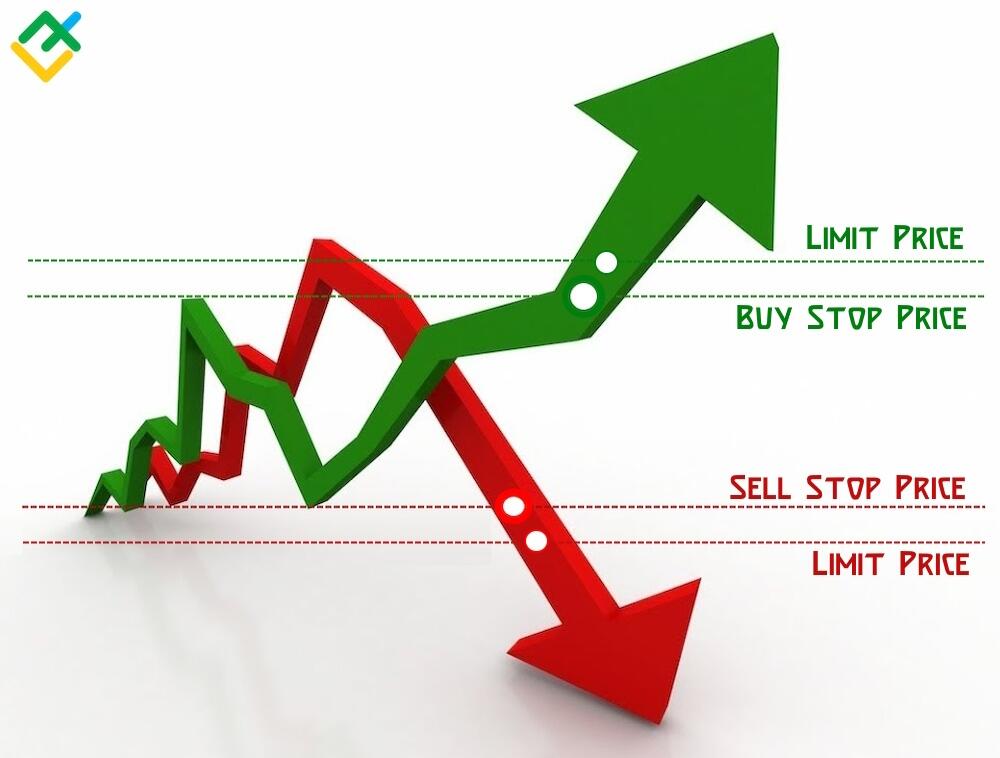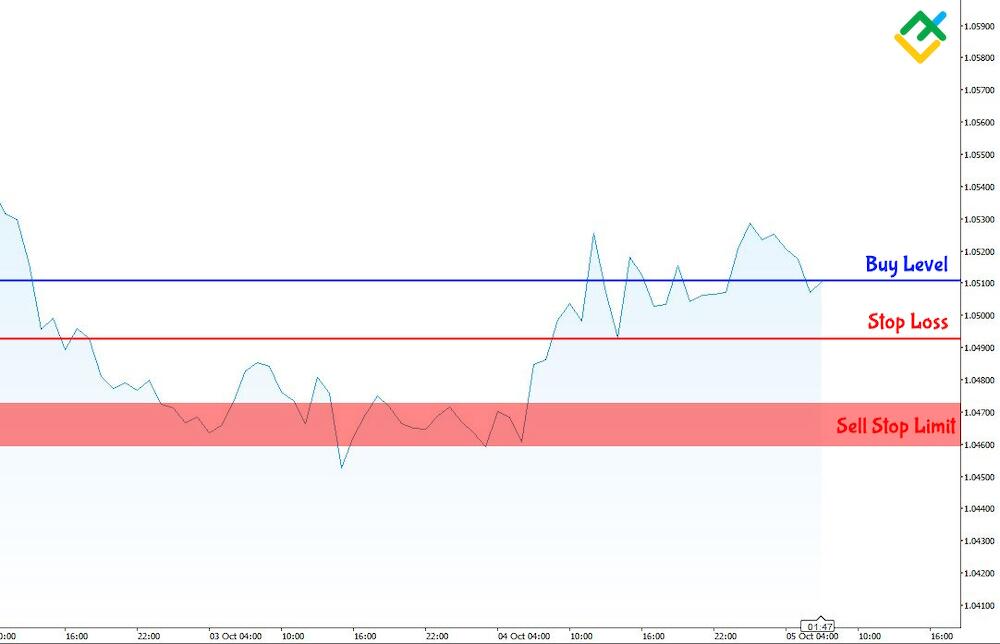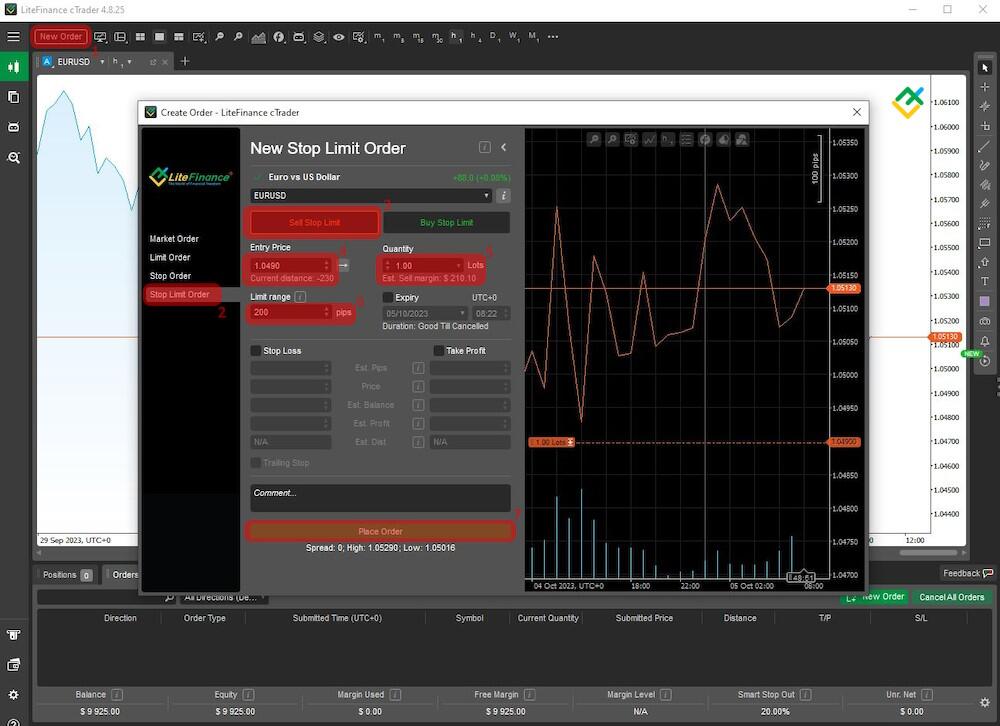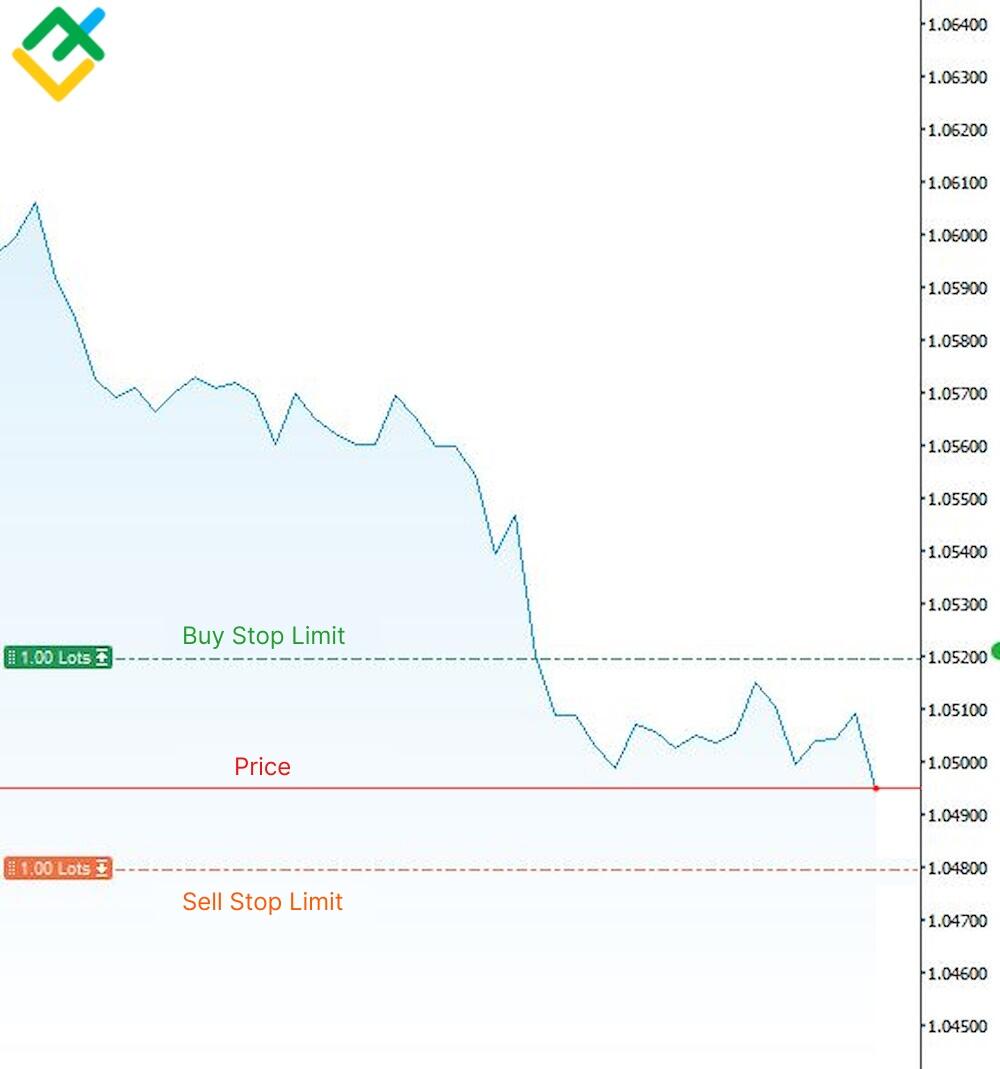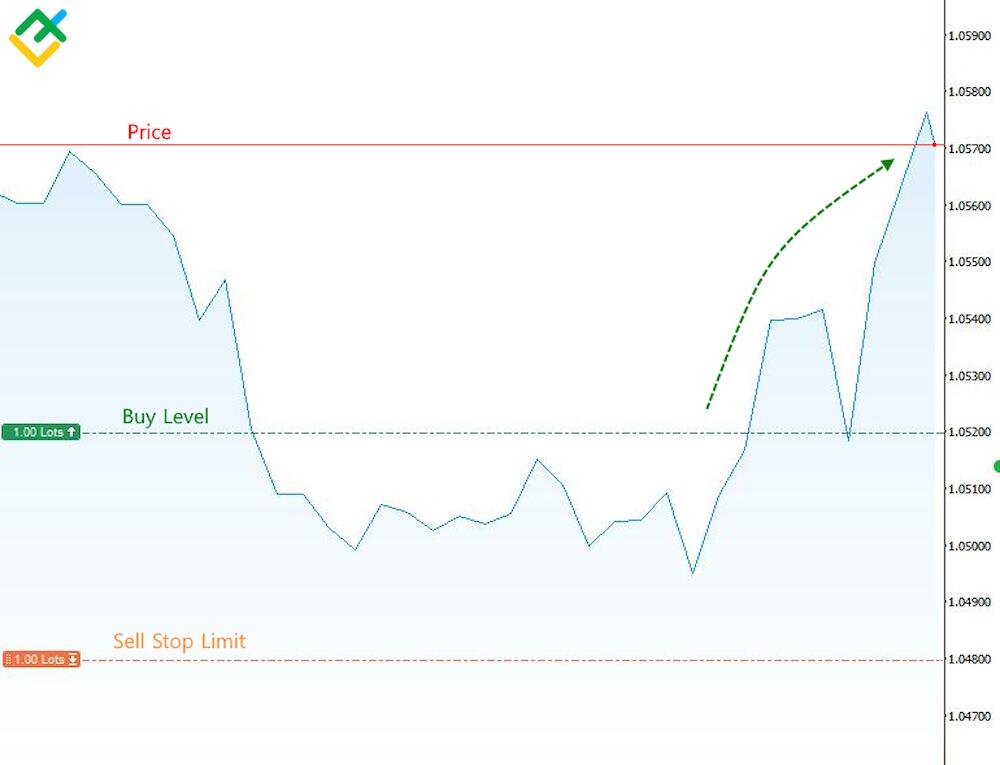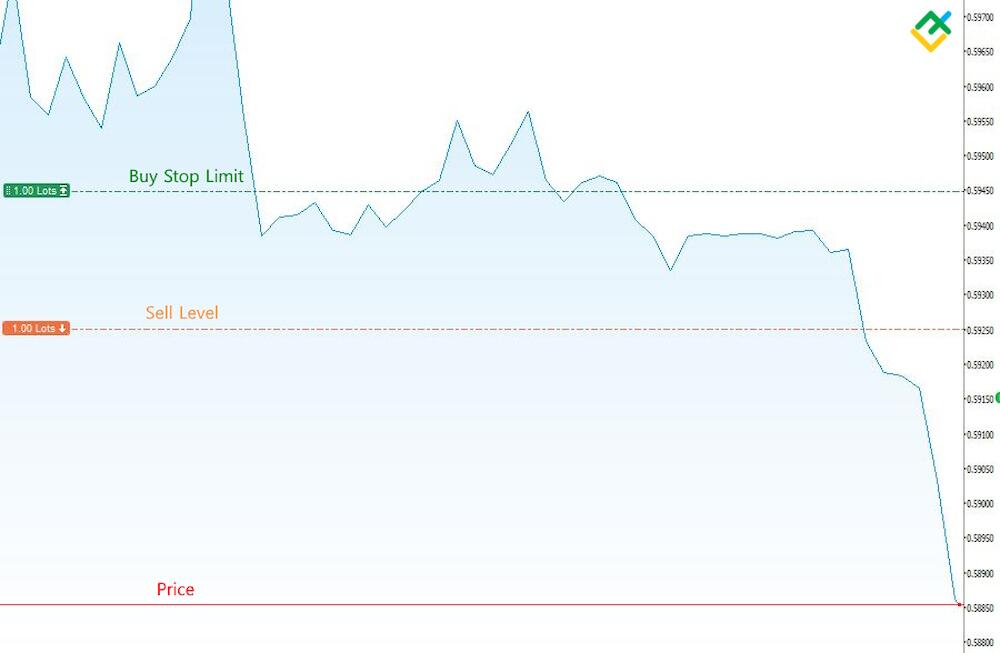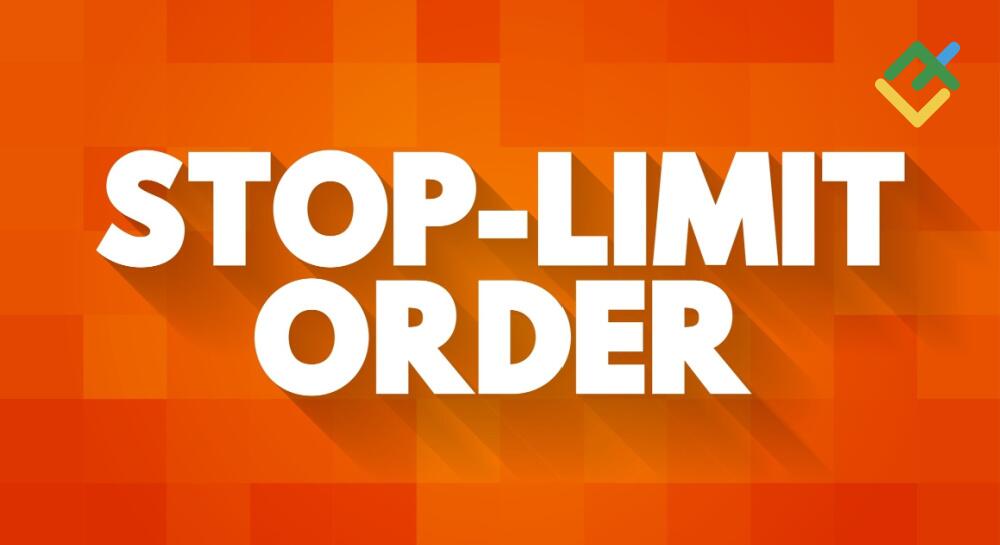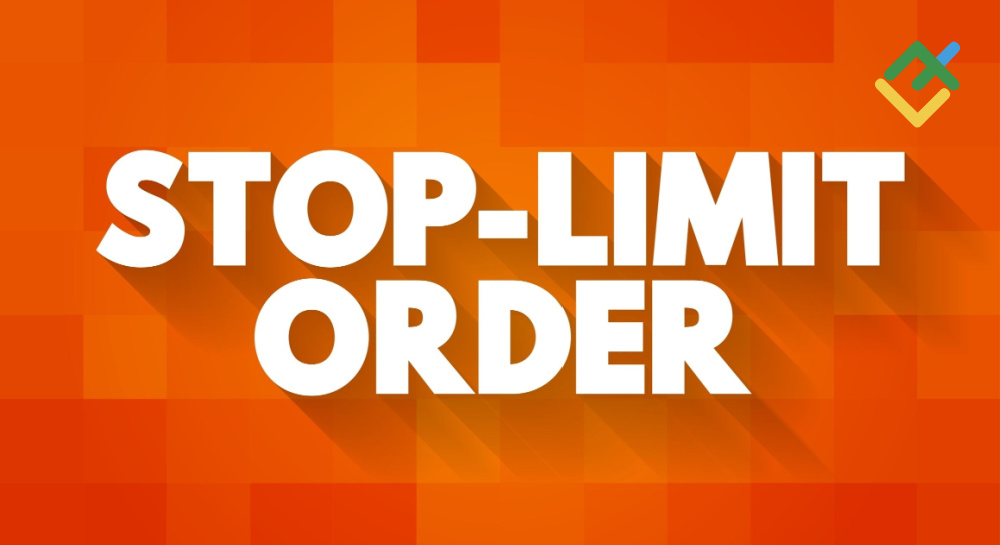
We all know and actively use limit orders, as they are very handy and can save you a lot of time. However, another type of order was designed to make trading even more efficient. We are talking about stop-limit orders.
A buy or sell stop limit order combines the advantages of the two types of orders, allowing market participants to manage their trades more effectively. Such an order allows you to preset specific levels for entering or exiting the market, which makes it an indispensable tool in volatile market conditions.
This article presents my experience of trading with these orders. It also explains why conventional limit orders can now be ousted from trading strategies based on technical analysis.
The article covers the following subjects:
What Is a Stop-Limit Order?
Very often, when trading in Forex or the stock market, we understand that the price will continue to move as soon as it overcomes a certain level. But when we confirm this, the price has already gone, and it is too late to enter the market. This problem is easily solved by setting a stop-limit order.
A stop limit is a market order to buy or sell a stock at a predetermined price and execution range. In other words, it is a sell or buy order combining a limit and stop order. Using a stop limit order provides the best purchase price or sell price.
Major Facts
-
A stop limit order is an order to a broker that involves opening/closing a transaction in the future at a predetermined stock price;
-
A stop limit order combines a standard stop order and a limit order; it is more effective than a regular market order and is triggered at the most favorable price for the trader;
-
Trading stop-limit orders allows the trader to save a lot of time — the trading process can be fully automated;
-
Understanding how a stop limit order works allows the trader to employ the most profitable trading strategies based on the news and chart patterns.
How Does Stop-Limit Order Work?
A stop-limit order is an improved version of standard buy stop and sell stop orders. It combines the advantages of these types of orders, providing greater flexibility and accuracy of execution.
A trader sets two price levels: a stop price and a limit price. In case of buying, the stop price should be higher than the current market price, and the limit price should be equal or slightly higher than the stop price. In the case of selling, the stop price is set below the current price and the limit price is set equal to or slightly below the stop price.
Thus, the trader sets the range in which the order should be executed, minimizing the risk of slippage. This approach is especially effective when trading large volumes, where a standard order can only be partially executed due to limited liquidity. A stop-limit order helps the broker to execute the trade within a specified price range, which significantly increases the probability that the order will be fully executed.
Buy Stop Limit in Forex
A buy stop limit order allows traders to set the preferred stop price above the current market price, after which the limit price is set at a level equal to or slightly exceeding the stop price. This approach is useful when a trader expects an uptrend to continue but does not want to risk buying at an excessively high price.
For example, the current market price of a currency pair is 1.1000. The trader expects that if the price reaches the stop price of 1.1050, an upward trend will persist. In this case, they can set the limit price at 1.1060 to avoid slippage and enter the market in the range of 1.1050–1.1060. If the price reaches this range, the order will be executed.
Sell Stop Limit in Forex
A sell stop limit order allows traders to set the stop price below the current market price and the limit price at a level equal to or below the stop price. This type of order is used when a trader awaits that a downtrend will be confirmed but wants to sell the asset at a level that is not lower than a predetermined one.
For example, the current market price of a currency pair is 1.2000. The trader expects that if the price falls to the stop price of 1.1950, a downtrend will be confirmed. In such a case, they can set the limit price at 1.1940 to minimize risks and guarantee execution in the range of 1.1950–1.1940. If the price falls to this range, the order will be executed.
How to Place a Stop-Limit Order
Trading stop limit orders is relatively new. Most trading platforms, as well as brokers, do not support this feature.
I will demonstrate how to place a stop limit order using the LiteFinance cTrader trading platform as an example.
-
Click on the New Order button in the top left corner.
-
Select the order type StopLimit Order in the left panel of the settings window.
-
After that, select the type of transaction that will be made — Sell Stop Limit.
-
Next, the Stop price will be set or the price at which the order will be executed — Entry price.
-
Then, set the transaction Quantity in lots.
-
Next, you need to define the Limit Range. This is the offset from the order opening price in points. We set the opening price at 1.04900 and the range at 200 pips. This means that your order will be triggered when the current market price is between 1.04900 and 1.04700.
-
Finally, click on the Place Order button.
When the order has been placed, it will appear in the bottom panel and will wait for its activation. You can also set an expiration date for stop-limit orders. That is, if the order is not executed before the expiration of this period, it will be automatically deleted.
Strategies for Placing Stop-Limit Orders
Stop-limit orders are one of the most useful tools in the toolkit of successful traders. Most often, stop-limit orders work the best in technical analysis.
I have compiled a list of the most effective ways to use these orders.
1. Support and resistance levels trading
Basic technical analysis strategies are based on the breakout of support/resistance levels or a price rebound from them. Trading with such strategies using a stop order means automating your strategy as much as possible. If you are waiting for the current price to break through one of the key levels, set a stop limit above or below this level, and the broker will do everything for you. You just have to watch and take profits at the right time.
2. Trading on the flat breakout
It often happens that the price moves in a narrow range without a clear trend. However, this situation will not last forever; sooner or later, the price will break out the trading range and start trending. And it doesn’t matter to us exactly where the price will go. Just set a stop limit sell order below the lower border of the sideways trend and a Buy stop limit above the upper border. Wherever the market moves, the stop limit order will enter stock trades in the desired direction.
3. Trend trading
When the market is trending, why not make profits from it? Just wait for a slight pullback and set your stop limit above the high last trade price. When the trend resumes and the stock rises, you will catch it and open a position along the trend. And if price movement reverses and the stock falls, your position simply won’t open, and you won’t lose anything.
4. Trading on the news
Many traders and investors use the economic calendar when trading. However, not everyone knows that you do not have to do investment research and guess the price direction after the news comes out but simply catch it using a limit order to sell or buy. A few minutes before publication set a buy or sell limit order of 300-400 pips above and below the current price. One of them will definitely work, and a profitable trade will be entered.
Examples of Buy and Sell Stop-Limit Orders
There are many areas of application of stop-limit orders, but let’s look at a real example of how exactly they work and how a trader should behave in this situation.
Buy Stop-Limit Example
So, the chart shows the EURUSD currency pair, and the moment is recorded when, in 5 minutes, the ECB’s decision on the interest rate will be published. Despite forecasts, the price can go in any direction. Let’s set pending orders in both directions. We will set a Buy Stop Limit above the current price and a Sell Stop order below. When the stop price is reached for one of the orders, it will be triggered, and the position to buy or sell will be opened.
After the news was published, the price began to rise sharply. The buy stop limit order was triggered. Liquidity for the currency pair is very high, so slippage did not occur. The entire order was executed at 1.0520, as the stop price was set. The price continued to rise, and we made a profit; we only needed to take the profit and exit the trade at the right moment.
Sell Stop-Limit Example
Now, let’s look at an example of entering a sell trade using a Sell Stop-Limit order.
Like in the previous example, we use major currency pairs. The trade was made on another popular currency pair, NZDUSD, and the strategy uses time-tested news trading. A large block of data on the labor market in New Zealand is expected to be published, and it’s time to catch the price. We place pending orders above and below the current price at approximately the same distance using Buy Stop-Limit and Sell Stop Limit orders.
Some time after the publication of the data, the price drops. A sell stop limit order was triggered, resulting in a short position being opened.
Please note: when trading on the news, price slippage is very common. If you set the order and the specified limit price is too close to the order opening price, it may not work – its price will simply slip through. I have had such cases. To avoid slippages, it is necessary to set price in a wider limit range.
Pros and Cons of Stop-Limit Orders
Stop limit orders were developed to improve existing limit orders; in addition to their advantages, they have disadvantages.
Advantages:
1. Flexible trade setup
A stop-limit order allows you to customize your trade to the smallest detail. Order data includes setting a stop loss, take profit, and trigger prices of limit orders. It is possible to set the order trigger range and the time during which your order will be active.
2. Execution accuracy
Stop limits allow you to get the most accurate entry price. This is achieved by setting the price range within which the order is executed. When working with large volumes, very often, orders are partially executed since there is simply no required volume at a specific market price. Stop limit orders allow you to avoid this. With their help, you can open positions at several prices within a range. As a result, your entire volume will be executed at the best stock’s price.
3. A perfect technical analysis tool
In modern trading, there are almost no strategies based on technical analysis without the use of pending orders. Such tools allow you to automate the trading process fully. Setting a stop limit allows you to be guaranteed to get the best exit limit prices without the risk of slippage.
Drawbacks:
1. Failure risk
A stop limit order will be executed at a price that goes within the range between the stop price and the limit price. But if this price doesn’t occur in the market, the order will not work out. This can happen when a price gap forms in the market. If an investor uses a stop limit order as a stop loss order, they may suffer large losses.
2. Difficulties in setting up and customizing
Trading with stop-limit orders looks simple and reliable, but beginners may have difficulties, as this tool has many settings. In addition to the trigger price, the order also has a limit price, and if you set it too close to the trigger price, it may not trigger due to slippage. When setting the range between the stop and limit price, you should take into account the level of volatility in the market and the liquidity of the trading instrument.
Conclusion
Summing up, I do believe stop limit orders are a very useful new feature for traders who trade based on technical analysis. Its main feature is the ability to set the order trigger range, which significantly reduces the risk of losing money rapidly due to slippage.
Although there are still rather few platforms and brokers that provide access to trading stop limit orders, this type of trading order is definitely worth using. They are superior to limit orders and even traditional stop-loss orders in almost every way.
Stop-limit Order FAQs
Stop limit orders are used by traders who want to automate the trading process and minimize the risks involved. Most often, these orders are found when trading breakout strategies or as a flexible stop loss.
Although these orders are pending, they remain market orders, which means they are executed only during regular trading hours. However, Forex standard market hours are around the clock. This means orders will be executed around the clock on any trading day, with the exception of Saturday and Sunday.
By default, stop limit orders work and remain good till canceled, i.e., until the trader deletes the order manually. However, you can customize the order expiration date and time.
First of all, using stop-limit orders saves you time. You do not need to monitor the market and wait for a certain price to come to the trade entry level. Secondly, due to the limit price, a stop limit order guarantees the best price for executing a transaction, which is very important in a fast moving market when volatility is high.
Stop limit orders are absolutely safe, as they have very flexible settings. The trader can set stop loss and take profit limits on this order, which will protect from losses. A stop loss is set higher than the maximum price for a sell trade and lower than the minimum price for a purchase.
There are two price points in a stop limit order – the stop prices or activation prices and the limit price or trigger price. Two quotation prices are necessary to ensure the order is executed when the price reaches any favorable level within the range while ignoring market slippage.
Stop loss is a strict order that will definitely be executed. However, it does not guarantee the accuracy of execution. In the case of slippage, the actual trigger price may be much worse than the target price. The stop limit will only be executed when the price hits the range. Otherwise, it won’t work.
A buy stop-limit order is a trading tool that is triggered when an asset reaches the specified stop price above the current market price. The order is then executed as a limit order within the preset price range, guaranteeing that the order is fully executed at the specified entry point.
A sell stop-limit order is an order that is triggered when an asset touches the stop price, which is below the market price. Once the stop price is hit, the order is executed as a limit order, ensuring that the asset is sold within a predetermined price range.
The content of this article reflects the author’s opinion and does not necessarily reflect the official position of LiteFinance. The material published on this page is provided for informational purposes only and should not be considered as the provision of investment advice for the purposes of Directive 2004/39/EC.
{{value}} ( {{count}} {{title}} )
This post is originally published on LITEFINANCE.

